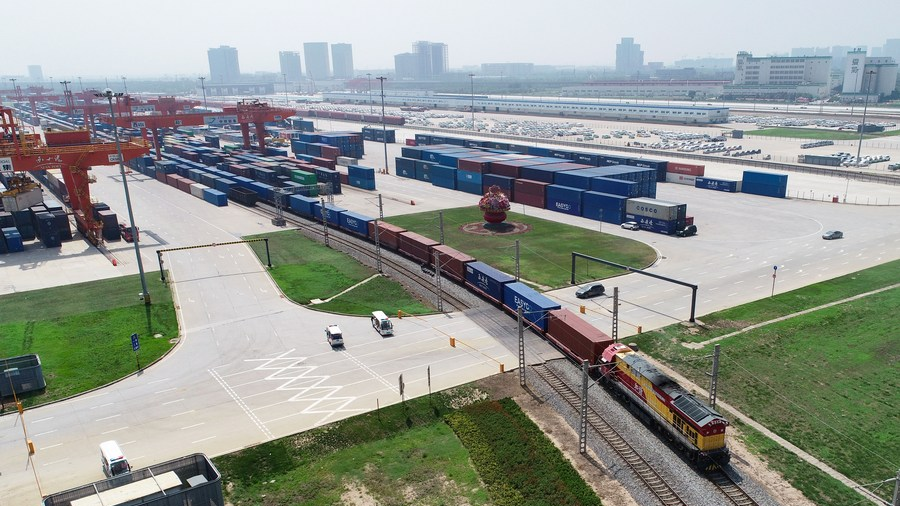The Belt and Road Initiative (BRI), proposed by China, has gained considerable attention, especially from the Global South. It aims to promote infrastructure development and accelerate economic integration amongst the participating countries. Dr. Vaqar Ahmed, a noted Pakistani economist, shared his insights on the initiative’s implications for developing nations.
China’s Transformation: An Inspiration
China’s impressive trajectory from a country grappling with extreme poverty to one that is quickly progressing towards development has become a model for many. Dr. Ahmed stated, “China’s own experience makes them more suited to devise programs for developing nations as compared to the Global North.”
BRI’s Underlying Vision
The essence of BRI, according to Dr. Ahmed, is to facilitate a more inclusive form of cooperation, especially tailored for developing nations. Unlike many traditional development models where donor countries define the terms, BRI is unique in its approach.
He contrasted BRI’s methodology by saying, “Traditional development programs might present countries with a predefined set of options, almost like a platter. The country is then expected to ‘choose’ from the options given.” This top-down approach often neglects the specific needs and priorities of recipient nations.
BRI, however, operates differently. The initiative asks countries to define their needs and areas where they wish to see investment. The China-Pakistan Economic Corridor (CPEC) serves as an emblematic example of this approach.
Delving into CPEC
CPEC, initiated in 2013, serves as one of the flagship projects of BRI. It connects the Gwadar port in southwestern Pakistan to Kashgar in northwest China’s Xinjiang Uygur Autonomous Region. The project emphasizes diverse sectors, from energy to transportation and industrial partnerships.
Dr. Ahmed elucidated on the CPEC’s operational dynamics, “Countries are actively encouraged to prioritize. They have the autonomy to dictate where they want Chinese investments to flow.”
Financial Dynamics of BRI
One of the significant features of BRI projects, including infrastructure development, is the associated financial model. These models are conducive for nations in ‘investment mode’, as described by Dr. Ahmed. Even when the projects are based on loans, they often come with extended repayment durations, allowing nations more financial breathing room.
Such favorable terms have made it viable for many developing countries to become part of the BRI framework. The initiative provides an avenue not only for financial support but also for capacity building, aiding nations in achieving long-term sustainability.
The Third Belt and Road Forum: An Opportunity for Collective Wisdom
The upcoming third Belt and Road Forum for International Cooperation to be held in Beijing is not just another event. For Dr. Ahmed, it’s a platform where the beneficiaries of BRI, primarily from the Global South, can converge to exchange experiences and knowledge.
He emphasized that the responsibility doesn’t solely lie with China. All participant nations should capitalize on this forum, sharing insights, successes, and challenges. This collaborative approach can significantly enhance the effectiveness of BRI projects.
Further elaborating on the efficiency of BRI, Dr. Ahmed noted, “Where traditional projects from Global North institutions might take five to ten years to materialize, BRI has showcased its ability to expedite processes, completing some projects in as short a duration as one to two years.”
Global Trade Dynamics and BRI
Understanding the global trade architecture is essential, especially in the context of BRI. The initiative, as it currently stands, holds the potential to unlock numerous opportunities for developing nations, enhancing their productive capacities.
Dr. Ahmed commented on this potential ripple effect, “When these productive capacities are bolstered, say in the large-scale manufacturing sector, there would be a natural inclination to increase trade activities.”
However, he added a note of caution regarding the Global North’s stance on trade policies, “At this juncture, if the Global North were to modify trade rules, it would send discouraging signals to the Global South. These nations, having bolstered their capacities courtesy of BRI and CPEC, would view such changes skeptically.”
Conclusion
The Belt and Road Initiative represents more than just infrastructure development or economic cooperation. For countries in the Global South, it’s an opportunity to carve out their development path, drawing from China’s experience and collaborative efforts. Dr. Vaqar Ahmed’s insights shed light on BRI’s transformative potential and the need for collective participation to realize its full benefits. As countries navigate this partnership, understanding its nuances becomes paramount for harnessing its promise effectively.
Read More:
